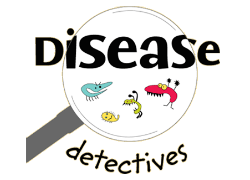Summary
Lesson Website: All Lesson Materials
You and your group members will be assigned a scenario involving someone you know who is experiencing some form of Skeletal/Muscular disorder. It will be your job to research and inform your classmates as well as the general public about the disease. As a group you must construct questions that will help guide your research. You will want to discuss any findings that explain preventive measures or share any discoveries that will help those affected. You can find answers to your questions by performing advanced Google searches, but you should also reference the classes Google Custom Search Engine. The four topics of research will include:
- Muscular Dystrophy
- Osgood-Schlatter Disease (Tendonitis)
- Osteoporosis
- Scoliosis
You will present your research results to the class, following the class generated rubric using the digital tool of your choosing.
TIPC Ratings
Ideal – Research & Information fluency was the key area of focus for this lesson. Students were required to engage in research practices that synthesized a real world task. A main component of this lesson involved the students working together in order to write thoughtful, creative, well-worded, questions that were relevant to the disease they were responsible for researching. The teacher provided the class with a Google custom search engine, as well as a Britanica graphic image database, however students still had to evaluate and select the most appropriate informational sources and digital tools.
Approaching – Students worked in self selected groups of 4 – 5 students per group. Each group member had a specific role and everyone had to reach a consensus concerning the digital tool that they wanted to use in order to present their findings to the class. Students utilized today’s meet in order to backchannel from off site locations, and students used web 2.0 tools in order to collaborate synchronously as well as asynchronously.
Upper Developing – Students applied digital tools of their choice in order to respond to purposeful questions. The group members were responsible for developing a majority of the questions guiding their research. Fact checking, and justification was evident in the students final products. At the conclusion of this project students had to reflect on their roles as critical thinkers and set goals for future growth.
Developing – Student choice was a major part of this lesson. Students had a plethora of digital tools to choose from and were not pigeon holed into only being able to choose from 1 set of standards. Freedom of choice in the projects end product allowed for the students to create meaningful work.





